| ID: MIS_1990 / Kathleen Haines Editor
| Title | Mistral - journal of Mersea Island Society. 1990. |
| Abstract | Mistral 1990. All scanned and on database.
Partial index:
- Wartime in Mersea
- An Evacuee. Patricia Norris
- A Land Girl. Edna Smy
- A Young Man. Sir Robin Day.
- A Farmer. Alan Gray.
- A Grocer. Elsie Whiting.
- A Child. Ruth V. Woodley.
- A Soldier. Eric Youldon.
- A young woman. Joyce Keene.
- The Aftermath. Ruth V. Woodley.
- Some Mersea Personalities
- Albert Clarke by Peter French
- Stanley Hills by Mervyn Dands and Fred Berry
- Ray Devonish by Veronica Canny
- Semprini by Essex County Standard and Janette Packard
- Myrddin Davies by E.H. and David Mussett
- Mersea Island Handicapped Club by Eric Heathcote
- Local churches: The Old City Hall, by Peter French
- The old houses of Mersea - introducing the Manors.
- St. Peter's and St. Paul's Weather Vane by Jean Woods.
Museum copy Accession No. 2011-09-007F.
All pages scanned from a borrowed copy.
Mistral 1989
Mistral 1991
Mistral - list of editions
|
| Author | Kathleen Haines Editor |
| Published | 1990
|
| Source | Mersea Museum / Ron Green
|
| ID | MIS_1990
|
| Related Images: |
|
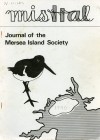 |
| ImageID: | MIS_1990_001 | | Title: | Mistral. Journal of the Mersea Island Society. January 1990. Front Cover. | | Date: | January 1990 | | Source: | Mersea Museum |
|
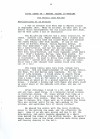 |
| ImageID: | MIS_1990_028 | | Title: | Mistral. Journal of the Mersea Island Society. January 1990. Page 14.
Fifty years on - Mersea Island in Wartime, by Pat Norris née Patten.
Recollections of an Evacuee.
I was an evacuee from West Ham to Mersea Island in September 1939. When we arrived, we were left at the school while arrangements for our billetting were made, and we were given a bar of chocolate!
The Billeting Officer was a local councillor, Mr James. Another girl, Megan Edwards, and I stayed with him. Our temporary home was called Maple Leaf because the James family came from Canada. It was on the corner of Suffolk Avenue, facing Empress Avenue. It was four bedroomed - and I was impressed! Mrs James was a semi-invalid, and her two married daughters, Rose and Flo, looked after her and the house. They were both newly-married, and their husbands lived there also. Rose's husband, Harvey, came from London. Flo was married to Bob whose father kept a fishmonger's in Colchester. He used to bring home salmon for Sunday breakfast - served with white sauce, it was delicious. Until then I had thought that salmon could only come out of a tin!
The James family were very kind, though very religious. Bob was Superintendent of the Sunday School, and Rose, Flo and Harvey were teachers. Flo ran the Girls' Life Brigade. I found going to Church three times on Sunday very frustrating. I couldn't knit or ride a bike - only go for walks or do my homework. Sometimes we would go to a prayer meeting at a friend's house. I shared a double bed with Megan and every night we would kneel at the bedside with Rose, and say our prayers.
After Christmas I moved to a Mr. and Mrs. Green and son Paul, aged three, in a bungalow called Alloway in Fairhaven Avenue. Mr. Green worked full-time as a gardener at a big house along East Road, owned by a business-man from London. When the family were due to come to Mersea, Mrs. Green went up to prepare the house. This was another world for me; bell-pushes in the kitchen, and wardrobes full of lovely clothes!
We shared the school with the local children, going in the morning one week, and the afternoon the next. Some of us who were eleven and due to sit the Scholarship, had extra lessons squeezed in a small room behind the stage at the British Legion. We weren't happy about this as the other children were doing games and country dancing in the hall.
[ Ron Green tells us that Rose's husband was known as Hardy Weaver although his proper name was Howard. Flo was married to Bob Hearsum. They were both having houses built at the time- in Maple Leaf garden facing Suffolk Avenue, my dad was working on them and I spent a lot of time there.
The Mr and Mrs Green were my Uncle Pearl and Aunt Ada. Cousin Paul now lives in the Philippines. The big house in East Road was Norden, owned by Mr Chamberlain.
Recollections of an Evacuee Page 2
| | Date: | January 1990 | | Source: | Mersea Museum |
|
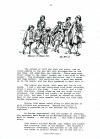 |
| ImageID: | MIS_1990_029 | | Title: | Mistral. Journal of the Mersea Island Society. January 1990. Page 15.
Recollections of an Evacuee by Pat Norris née Patten contd.
Arriving at Mersea 1939 - sketch by Don Butlin.
The Autumn of 1939 was warm and sunny, and we could paddle in the sea and pick blackberries on the way home, and sometimes see rabbits. There were many fruit trees in the James' garden and I was told to help myself. The greengages were delicious, and I'd never had them before. One exciting day, a mine was washed up on the beach, and the Navy appeared to deal with it.
The winter was bleak, with snow and ice on the ponds. I had a knitted pixie-hood with scarf attached, which I wore all the time. I had a chill, and a kind lady, Mrs Boon, looked after me and any other ailing evacuees. Her husband was lovely; he worked at the local mill, and when I got better he showed me round. Many of the roads were unmade, and when the thaw came, became quagmires.
Spring 1940 meant walks along to East Mersea to pick violets and primroses. Mersea was really a children's paradise as it was seaside and country combined.
As Easter approached, and the threat of invasion, the evacuees were moved on to Worcestershire, but I went back to London ... and the Blitz ... but that's another story.
(Pat Norris visited Mersea last summer and signed the visitors' book in the Museum. She enjoyed a nostalgic afternoon, and knocked at the door of the house in Suffolk Avenue, but no-one was in.)
Recollections of an Evacuee Page 1 | | Date: | January 1990 | | Source: | Mersea Museum |
|
 |
| ImageID: | MIS_1990_030 | | Title: | Mistral. Journal of the Mersea Island Society. January 1990. Page 16.
A Land Girl - Edna Smy.
Edna joined the Women's Land Army and was sent to Peldon. The girls worked for the War Agricultural Committee.
Women's Land army 1940 - sketch by Don Butlin. | | Date: | January 1990 | | Source: | Mersea Museum |
|
 |
| ImageID: | MIS_1990_031 | | Title: | Mistral. Journal of the Mersea Island Society. January 1990. Page 17.
A Land Girl by Edna Smy. In Peldon and mostly Mersea, contd.
- British Legion Hall served as a cinema.
- the forces canteen was one of the two little cottages by the church on Coast Road.
A Young Man - Sir Robin Day. | | Date: | January 1990 | | Source: | Mersea Museum |
|
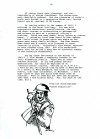 |
| ImageID: | MIS_1990_032 | | Title: | Mistral. Journal of the Mersea Island Society. January 1990. Page 18.
A Young Man - Sir Robin Day contd.
"I joined my local Home Guard in West Mersea, the little island in Essex which was where we had spent many happy family holidays. The West Mersea Home Guard was a coastal unit intended to repel the invasion by Hitler.
...
"I also became a temporary teacher in two local elementary schools.
"Getting up at 6.00am I went by bus and bicycle from my home at West Mersea to a school at West Bergholt, and later to another school at Wivenhoe.
From his Autobiography "Grand Inquisitor". | | Date: | January 1990 | | Source: | Mersea Museum |
|
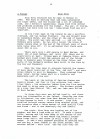 |
| ImageID: | MIS_1990_033 | | Title: | Mistral. Journal of the Mersea Island Society. January 1990. Page 19.
World War 2 - A Farmer. Alan Gray.
Alan Gray recalled how he came to Mersea in 1940. The farm at Bocking Hall had been untenanted for eight weeks, and the Island had a lot of unfarmed land, and a derelict appearance. | | Date: | January 1990 | | Source: | Mersea Museum |
|
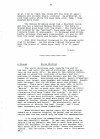 |
| ImageID: | MIS_1990_034 | | Title: | Mistral. Journal of the Mersea Island Society. January 1990. Page 20.
World War 2 - A Farmer. Alan Gray contd.
A Grocer - Elsie Whiting. | | Date: | January 1990 | | Source: | Mersea Museum |
|
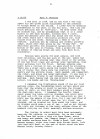 |
| ImageID: | MIS_1990_035 | | Title: | Mistral. Journal of the Mersea Island Society. January 1990. Page 21.
World War 2 - A child. Ruth V. Woodley.
I was born in 1938 and by the time I was four years old had grown quite accustomed to the presence of troops on the Island. I lived with my maternal grandmother in the Lane, in the Old City... | | Date: | January 1990 | | Source: | Mersea Museum |
|
![Mistral. Journal of the Mersea Island Society. January 1990. Page 21.
Ruth V. Woodley contd.
...
As I conclude my childhood memories, I must tell you that in June 1948, I was a ten year old bridesmaid whose photograph was on the front of the Mersea Mercury, then run by the Sitwell sisters. [ see <a href=mmphoto.php?typ=ID&hit=1&tot=1&ba=cke&bid=MCY_009_P01>MCY_009_P01 </a> ] MIS_1990_036](MMThumbnails23/MIS_1990_036.jpg) |
| ImageID: | MIS_1990_036 | | Title: | Mistral. Journal of the Mersea Island Society. January 1990. Page 21.
Ruth V. Woodley contd.
...
As I conclude my childhood memories, I must tell you that in June 1948, I was a ten year old bridesmaid whose photograph was on the front of the Mersea Mercury, then run by the Sitwell sisters. [ see MCY_009_P01 ] | | Date: | January 1990 | | Source: | Mersea Museum |
|
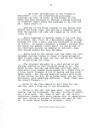 |
| ImageID: | MIS_1990_038 | | Title: | Mistral. Journal of the Mersea Island Society. January 1990. Page 24.
A Soldier. Eric Youldon contd. | | Date: | January 1990 | | Source: | Mersea Museum |
|
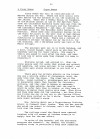 |
| ImageID: | MIS_1990_039 | | Title: | Mistral. Journal of the Mersea Island Society. January 1990. Page 25.
World War 2 - A Young Woman. Joyce Keene.
Private schools at Cornerways, and at the Nothe which was run by Susan Luckham's grandparents. Miss Alice and Miss Hope Webb did the teaching, but Miss Alice was killed one day on her way to the Foreign Office.
Mr Weekes the postman. Elsie Whiting ran the school kitchen. Mary Wheeler attended Miss Webb's school at the Nothe.
| | Date: | January 1990 | | Source: | Mersea Museum |
|
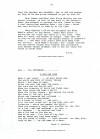 |
| ImageID: | MIS_1990_040 | | Title: | Mistral. Journal of the Mersea Island Society. January 1990. Page 26.
A Young Woman Joyce Keene contd.
A Worried Song - by Ruth V. Woodley.
| | Date: | January 1990 | | Source: | Mersea Museum |
|
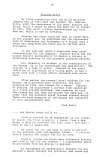 |
| ImageID: | MIS_1990_043 | | Title: | Mistral. Journal of the Mersea Island Society. January 1990. Page 28.
Some Mersea Characters - Stanley Hills, by Fred Berry and Mervyn Dands. | | Date: | 1990 | | Source: | Mersea Museum |
|
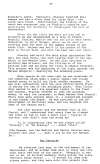 |
| ImageID: | MIS_1990_044 | | Title: | Mistral. Journal of the Mersea Island Society. January 1990. Page 29.
Stanley Hills, by Fred Berry and Mervyn Dands continued.
Ray Devonish died suddenly while making plans for their new canal boat and retirement. Veronica Canny worked for them for over eleven years. | | Date: | 1990 | | Source: | Mersea Museum |
|
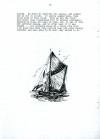 |
| ImageID: | MIS_1990_045 | | Title: | Mistral. Journal of the Mersea Island Society. January 1990. Page 30.
Ray Devonish contd.
Sailing barge - sketch by Don Butlin. | | Date: | January 1990 | | Source: | Mersea Museum |
|
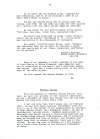 |
| ImageID: | MIS_1990_049 | | Title: | Mistral. Journal of the Mersea Island Society. January 1990. Page 34.
Some Mersea Characters - Semprini contd.
Myrddin Davies - a Welshman of charm and versatility who had made Mersea his home port since about 1938. He was a teacher at West Mersea school.
Myrddin Davies page 2
| | Date: | January 1990 | | Source: | Mersea Museum |
|
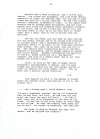 |
| ImageID: | MIS_1990_050 | | Title: | Mistral. Journal of the Mersea Island Society. January 1990. Page 36.
Myrddin Davies contd. | | Date: | January 1990 | | Source: | Mersea Museum |
|
 |
| ImageID: | MIS_1990_058 | | Title: | Mistral. Journal of the Mersea Island Society. January 1990. Page 41.
Another Local Novel
I have been reading Three Came Unarmed, by E. Arnot Robertson, published in 1929. It is set on Mersea
Island and there are residents who remember the writer living here before the war. Victoria Sackvill-West
wrote, ".... there are three children, two boys and a girl, of a Norwegian mother and an English #
Missionary who has died of drink on some vague island of the Malayan Archipelago. They have grown up as
savages, creatures of instint, beautiful in body and untutored in mind ... after their father's death
they are suddenly precipitated into English provincial society ... a rich opportunity for comedy and
satire."
E. Arnot Robertson Born circa 1903
Mafalda Tapp writes ......
She worked in London as a journalist, and contributed several articles to the Yachting Monthly magazine,
whose editor found her a great talker with a strident voice. She was a strongly opinionated young woman,
red haired, slender, almost scraggy proportions, very argumentative and unconventional - a modern
"woman's Libber", to put it mildly.
In her novel "Three Came Unarmed" (1929), Mersea featured strongly with an accurate description of The Hard, and Coast Road with its fresh running spring water.
One local recalls having "Litle Old Ginger", was she was called, to tea on board their yacht Marjorie, moored in Thornfleet. On leaving she said, "Thank you so much, I've got a lot of copy today".
James Clarke, father of Ben Clarke who had a boat yard in The Lane, built a sailing dinghy for Miss
Robertson in Rowhedge.
It appears she had many boy-friends, one of whom was an artist. She married Charles Turner (who worked in
the City), but she called him Henry, having an aversion to the name Charles. The novel is dedicated to
him.
She and her husband sailed in a Payn Clark designed yacht, Lona IV, and another novel, Four
Frightened People, evolved featuring Pinmill.
Continued on Page 42
| | Date: | January 1990 | | Source: | Mersea Museum |
|
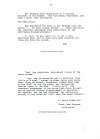 |
| ImageID: | MIS_1990_059 | | Title: | Mistral. Journal of the Mersea Island Society. January 1990. Page 42.
E. Arnot Robertson
Continued from Page 41
Her husband died tragically in a boating accident on the Thames. She was deeply depressed, and died a short time afterwards.
She dedicates the book to her husband with the word; "... to my most valued friend .... whose unfailing
and ingenious pessimism robs publication of any unforeseen disappointments."
In fact, she was right; it is not a very aborbing book, but it does have some interest for those who
know the Island.
KMH
"Mud, the glutinous, grey-black lining of the Essex creeks."
"'Aye, she is wunneful wet to wind'ard, this little ow'd boat!' agreed an Essex voice just above them, where an elderly fisherman, hidden from them by the swell of the top sides, was re-caulking crawled seems in the deck. 'Little ow'd,' the commonest endearment in the broad East-Coast dialect, can be applied without disparagement to anything. The speaker, who was her deckhand, was infinitely prouder of the beautiful craft than the owner himself."
E. Arnot Robertson
Three Came Unarmed
(1929 novel).
See also
E. Arnot Robertson from Winifred Hone Memoirs
E. Arnot Robertson by Elaine Barker Literary Connections with Mersea.
| | Date: | January 1990 | | Source: | Mersea Museum |
|
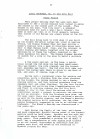 |
| ImageID: | MIS_1990_062 | | Title: | Mistral. Journal of the Mersea Island Society. January 1990. Page 45.
Local Churches No. 8. Old City Hall, by Peter French.
Many people walking down The Lane have been surprised to see a little mission hall tucked in among the houses in the oldest part of the island. They wonder at the name, "Old City Hall",
a somewhat grandiose name for such a small hall; however, the name is more
apt than it at first appears, because that corner of old Mersea was always
known as the Old City.
The hall dates back to 1930 when it was built by two maiden Christian ladies who lived in Seaview Avenue, the Misses Plummer.They had been holding a women's meeting once a week in Riverside House next door to West Mersea Yacht Club, and the interest in Bible reading and hymns, together with the unique personality of these two ladies, resulted in the venue becoming too small. The Misses Plummer decided to search for a site in the area to build a suitable hall.
A few years earlier, in The Lane, a public house called the Old Ship Inn had been demolished. This was bought, the site cleared, and the biggest hall possible was built. The Old City Hall came into being; the ladies went there to drink in the Word of God, and also, of course, cups of tea.
Having such a convenient place for worship and preaching, quite a distance from the other churches on the Island, the ladies decided to run a Sunday evening service, and they invited preachers from the Assembly Hall and other churches. By the late forties the younger and surviving Miss Plummer,being too old and frail to continue
running the Old City Hall, handed it over to four local Christians with no
conditions, except a request to maintain the services as far as possible. This
the Trustees have done, and for many years there was a mid-week children's service
as well as the Sunday evening, and the Women's Meeting. The evening service still
continues, the few older people frequently augmented by ten or so children and
teenagers. The Women's Meeting was discontinued a few years ago.
Last Easter the family of the late, well-known and much respected, Myrddin Davies asked if the funeral service could be held there. Myrddin and his wife had lived with their family just behind the City Hall for many years. This presented a problem
for so small a hall, but a congregation of over eighty paid tribute to an old friend, surrounded by daffodils from his garden next door, and moved by the recording of Myrddin playing his harp.
| | Date: | January 1990 | | Source: | Mersea Museum |
|
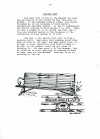 |
| ImageID: | MIS_1990_069 | | Title: | Mistral. Journal of the Mersea Island Society. January 1990. Page 52.
Jubilee Seat.
The seat that is now in the Museum car park was originally on the corner by the 'bus stop at Aldham. It was damaged several times, and always finished up in the workshop of Fred Berry's engineering workshop nearby. It was to commemorate the Silver Jubilee of King George V in 1935. There is also a plaque on it to record the fact that a tree was planted nearby on the occasion of the coronation of King George VI in 1937.
One day, a tar barrel fell onto it from a passing lorry. Realising that someone could have been sitting on the seat, and been badly hurt or killed, a local councillor told Fred to keep it. He did, in his garden, until he got tired of painting it. He then gave it to the Museum. Now he finds he is still painting it because he does so many jobs for the Museum. Long may he go on painting it for us!
| | Date: | January 1990 | | Source: | Mersea Museum |
|
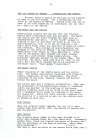 |
| ImageID: | MIS_1990_070 | | Title: | Mistral. Journal of the Mersea Island Society. January 1990. Page 53.
The Old Houses of Mersea .... Introducing the Manors.
East Mersea. Here the original manor remains, but out of it were carved some time before 1290, the manors of Reeves Hall and the Rectory.
West Mersea. The original manor seems to have been divided at an early date between Bower Hall and Peete Hall. Presumably before this, there was created the manor of Bocking Hall and the patrimony of the Dean of Bocking. | | Date: | January 1990 | | Source: | Mersea Museum |
| |